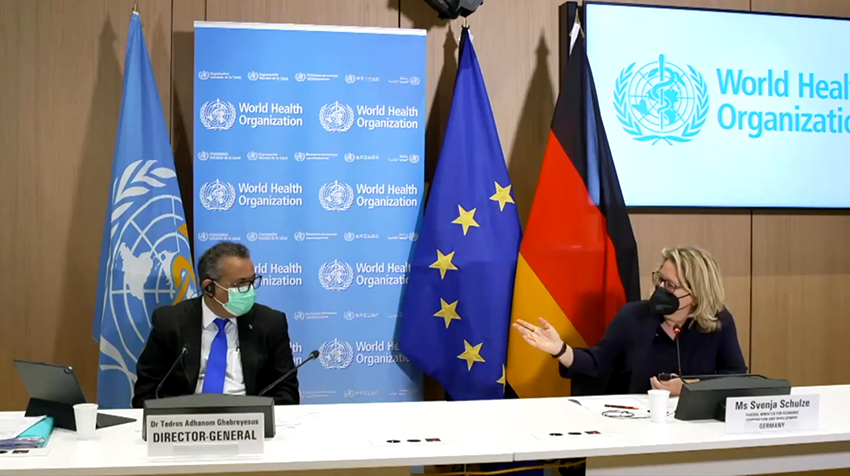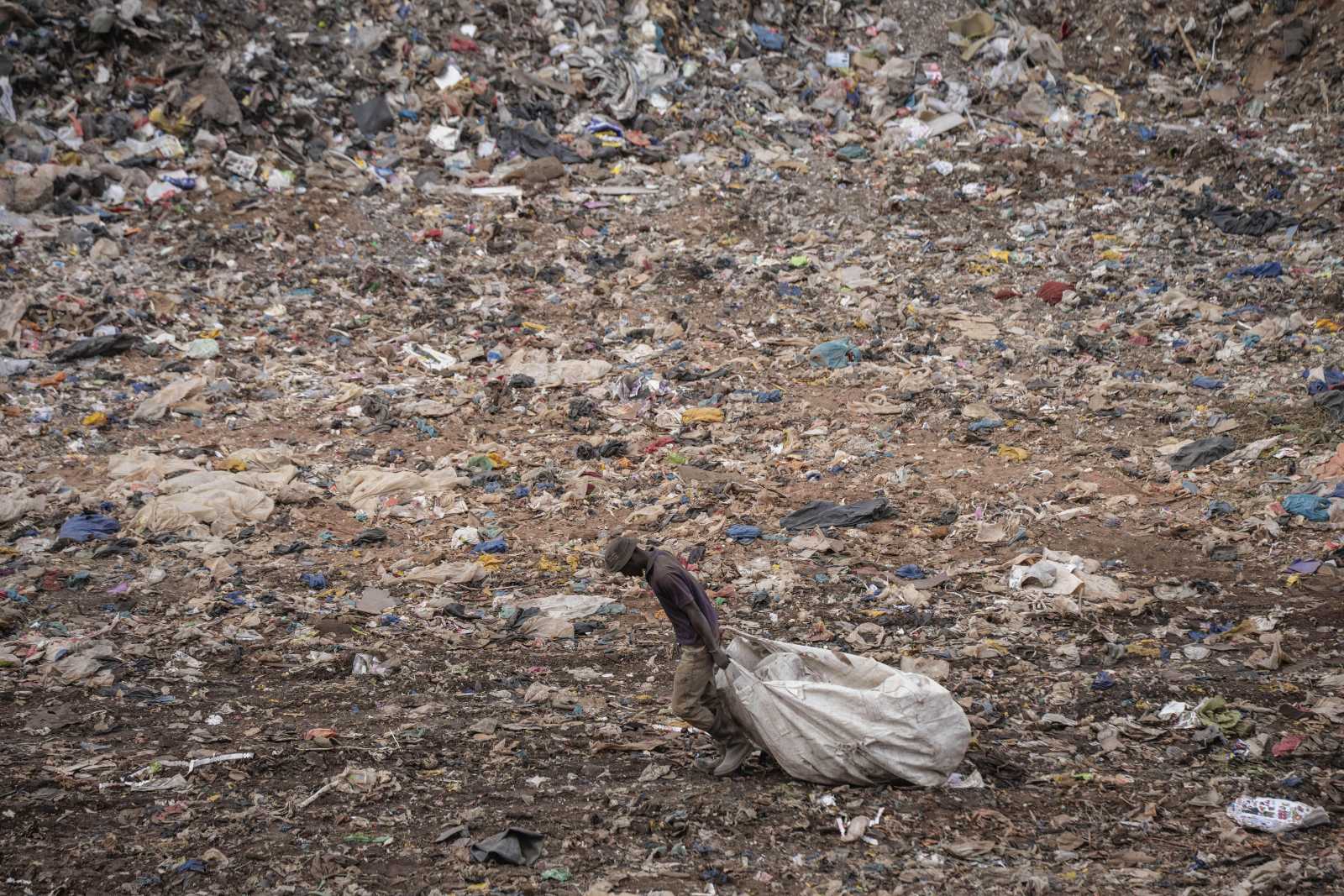Global warming
Will the tide shift in Paris?

Instances of natural disasters caused by extreme weather have been increasing in recent years, showing that the Earth’s climate is changing. 2014 was the warmest year on record since the collection of data began 150 years ago, and 14 of the past 15 years were among the hottest in history. Devastating floods such as those in 2010 in Australia and extreme droughts in Africa or California are occurring more and more often. In 2013, typhoon Haiyan was the strongest storm of its kind ever be measured on land. It claimed more than 6,000 lives in the Philippines.
It is true that most single weather events can not clearly be attributed to global warming. They might have occurred anyway – after all, there were extreme weather events before climate change set in. One thing is certain, though: a warmer climate means more – and more extreme – heat waves, strong rains, floods, droughts and storms. That is the scientific understanding, and it has been asserted in the recent reports of the Intergovernmental Panel on Climate Change (IPCC).
Reinsurance companies like Munich Re and Swiss Re cover disaster damages. Their databases show that many world regions are witnessing more disasters and greater damages. Other available data, for instance from the University of Louvain or the EM-DAT Emergency Disasters Database, confirm that trend.
The data indicate that weather-related damages are rising in particular. They have increased considerably more in the last 30 years than geophysical damages caused by earthquakes or volcanic eruptions, which are not influenced by the weather. The people hit hardest by natural disasters are poor people in developing countries. They often live in regions particularly at risk and have no means to protect themselves from damage.
Scientists have been telling us for a number of years that a rise in average temperature by more than two degrees above pre-industrial levels will irrevocably destroy important ecosystems which are relevant for the global climate and increase the risk of mayor tipping points. The melting of massive ice caps in Greenland and Antarctica will make sea levels rise dramatically. Increased global warming will endanger the Amazon rainforest as well as the tundra in the north. Systemic patterns of climate and weather, such as El Niño and La Niña, are likely to be disturbed and changed.
Since the first Conference of Parties (COP1) of the UN Framework Convention on Climate Change (UNFCCC) in Berlin in 1995, the international community has sought to curb global warming. It has been discussing the two-degree limit since 1996. It is well understood that even the smaller temperature increase we are already exposed to has dramatic consequences for small Pacific islands like Tuvalu for example. It was a great success that the international community agreed to stay within the two-degree limit at the climate summit COP16 in Cancún in 2010.
To outsiders, climate negotiations often seem to achieve little or nothing. Important meetings have failed, such as the COP15 in Copenhagen in 2009, which had raised great hopes. Similar expectations are again growing around the world ahead of the upcoming climate summit in Paris in December 2015.
Not another Copenhagen trauma
In contrast to the Copenhagen Summit, there are indicators today that global energy-use and emission trends may be changing. The growth of global greenhouse-gas emissions has slowed down since 2012 and, according to preliminary figures from the International Energy Agency (IEA), energy-related emissions even stagnated in 2014. This is a promising development, especially because it set in without a global economic crisis reducing energy consumption.
The cost of electric power from renewable sources like wind and solar light have fallen dramatically. Various factors have contributed, from Germany’s Renewable Energy Act (EEG), which was copied in many countries, to low-cost manufacturing of equipment in China. Electricity generated from renewable sources has become competitive with that from coal in many parts of the world, so investments in these technologies are increasing fast. China, which over the past 15 years was the major contributor to the rise of emissions, burned less coal in 2014 than in 2013 – the first stagnation in decades. The big questions now are whether these encouraging trends are signs of a real turnaround and whether the climate summit in Paris can entrench this trend by defining meaningful and binding targets for reducing emissions and making arrangements for cooperative climate action.
Unlike in Copenhagen, the negotiators in Paris will probably not press countries to accept more ambitious targets until the last minute of the talks. This time, participating countries are disclosing their proposals and climate targets months before the climate conference. The advantage of this approach is that the climate summit will not fail because of haggling about climate targets.
There is a downside however. It seems probable the summit will only result in an agreement that will keep temperatures below a limit of three degrees – which is better than the 4.5 degrees scenario that we can expect from business as usual, but less ambitious than the two-degrees level. A temperature increase of three degrees would imply an end to the relatively stabile climate Earth has had in the past 10,000 years or so.
Such an outcome would imply two things: First of all, it will be a key benchmark for success in Paris whether the goals agreed are flanked by a credible strategy that allows governments to return to the two-degree path in the not-so-distant future. This would require:
- a regular toughening of the minimum goals agreed in Paris,
- additional and serious obligations to be placed on non-state actors such as cities, financial-market players and other private-sector companies, and
- an initiative started by a frontrunner alliance of important countries in north and south to collectively pursue a forceful strategy to achieve the two-degrees goal in spite of the Paris agreement.
The second important issue is to strengthen efforts to adapt to climate change. This issue has been much debated at climate conferences (e. g. work programme “Loss and Damage”). Should temperatures rise beyond two degrees on average, this issue will become even more important.
Minimal success versus movement
Various scenarios are possible regarding negotiation results in Paris. COP21 could even fail completely, but that, thankfully, looks rather unlikely.
A minimal compromise is more probable. It would see China and the USA, the world’s largest polluters, accepting climate targets that signify progress, without being nearly enough to achieve the two-degree limit. Other governments would take their cue. The EU would set itself a 40 % emissions-reduction target by 2030, which would be an improvement, but not enough for the two-degree goal either. Moreover, the legally binding parts of the agreement would contain weak rules for measuring, reporting and verifying implementation.
The most likely scenario is that minimal targets will be set for 2030. As they will not be sufficient, humankind will miss its chance to contain climate change within the two-degree range. In this setting, moreover, industrialised countries and richer emerging economies would not make enough money available to poorer developing countries to help them do three things: start a technological transition away from fossil fuels, adapt to coming climate change and cope with damage.
However, real progress is possible too. The negotiating parties could take the two-degree limit seriously, and set a global goal to decarbonise their economies by mid-century. Talks would result in a legally binding system to increase country targets every five years at least, starting in 2020. Clear and binding rules would ensure that one tonne of carbon emissions in India would be equivalent to one tonne in the USA. Countries would have to report on progress and obstacles. The richer countries would have to provide funding for reliably transforming energy sectors and grant access to relevant technology. Governments of advanced countries would accept the responsibility of making poorer countries more resilient to the risks of climate change and supporting the appropriate measures.
The remedy for the climate will not materialise magically just before Christmas. But the summit could serve as an important catalyst. It could speed up the debate and make climate friendly decisions more likely at the national, regional and municipal level. In this context, governments could spur development banks and export credit agencies to offer financing for renewable-energy options and support the reduction of subsidies for fossil fuels.
Whether Paris will meet such expectations depends on the results of other important UN conferences this year – including the UN conference Financing for Development in Addis Ababa in July or the summit on Sustainable Development Goals in New York in September. Even the G7 summit in Schloss Ellmau this month could prove important to organise political will in major industrial countries and set the agenda for Paris.
Strategic adaptation
Regardless of the outcome of the Paris summit, the citizens of all countries will have to adapt to climate change one way or the other. Even with new limits on global warming, extreme weather will become more common. In that light, it is good that work on funding for adaptation is being driven ahead. The Green Climate Fund (GCF), which was formally established during the Cancún summit in 2010, will serve that purpose (also note essay by Liane Schalatek on p. 18 ff.). The GCF had around $ 10 billion at the end of 2014, thanks in part to a German initiative towards the Ban-Ki-moon Special Climate Summit held in New York in September 2014. In Copenhagen in 2009, developed countries had pledged to mobilise additional $ 100 billion public and private climate financing per year for mitigation and adaptation by 2020.
Now is the time to deliver and to discuss a reasonable allocation of these resources, which means thinking about sustainable adaptation to climate change and preparation for dealing with natural disasters. Groups responsible for implementing measures on the ground must be trained and prepared in good time – work must start now! Adaptation to climate change must be made to work in many different settings on a small scale – but be coordinated on a large scale.
That said, it will be crucial to make use of existing knowledge in threatened areas and to develop solutions at the local level with local actors. Measures will only work if the people affected are involved. One important step would simply be to give them some tools and instructions to help themselves. Building local capacities will prove vital: Local circumstances, traditional knowledge, resources, land use and environmental impacts will have to be taken into account.
It is equally important to consider governance, reliable funding, best practices, efficiency, ecosystem services and ownership. Adaptation always happens in different environments. It will only be effective in appropriate political, social and regulatory contexts. Many years’ efforts to implement a project can be made worthless by problems that arise in a single dimension. If, in the end, the requirements of the UN and national governments (top-down approach) match the efforts made at the local level (bottom-up approach), we will be making real progress.
Climate change has become ever more important in recent years, but it is still highly uncertain whether the global rises in temperature will be limited to two degrees on average. The Paris climate summit could be an important step towards this goal. But even if the two-degree goal is achieved, significant adaptation measures are needed to cushion the consequences of climate change and make them bearable. Especially for the poor and particularly vulnerable people in developing countries and emerging markets, this is the core – and vital – issue.
Thomas Loster is the managing director of the Munich Re Foundation and a board member of the Munich Climate Insurance Initiative (MCII).
tloster@munichre-foundation.org
http://www.munichre-foundation.org
Christoph Bals is the policy director of Germanwatch, a civil-society organisation and a board member of the Munich Climate Insurance Initiative (MCII).
bals@germanwatch.org
http://www.germanwatch.org














